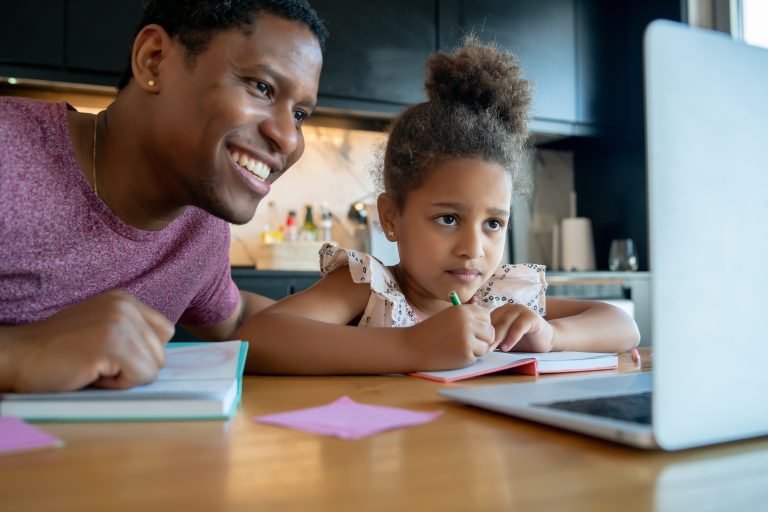
The world of education and therapy has witnessed a digital revolution. Remote learning tools have not only brought the classroom into our homes, but they have also transformed therapy sessions, making them more interactive, engaging, and accessible. Two such tools that have taken the world of remote learning by storm are virtual whiteboards and breakout rooms. For therapists in New York and beyond, these tools are proving to be game-changers.
Here are some schools that use remote learning in New York:
- Online K-12 Public Schools in New York: New York online public schools can provide a great alternative to the traditional brick and mortar education experience[1].
- NYC to launch two ‘full-time’ virtual schools: New York City is planning to launch two fully virtual schools[2].
- Overview of Remote Learning for Families – NYC DOE: On March 23, 2020, New York City public schools launched remote learning for all students through the end of the 2019-2020 school year[3].
- New NYC hybrid high school program could be fully remote by 2023: New York City is rolling out two virtual learning programs for high schoolers — with the aim to turn them into full-blown remote schools by 2023[4].
- Charter School Remote Learning Models: Some charter schools in New York offer remote learning models, such as Achievement First Remote Learning Resources and KIPP NYC Remote Learning Resources[5].
It’s worth noting that remote learning has been used in New York City public schools in the past, and it may continue to be used in the future due to various reasons such as air quality concerns[6].
Virtual Whiteboards: Painting the Picture
A virtual whiteboard is a blank space where therapists and students can interact in real-time. Think of it as a physical whiteboard, but with endless possibilities. You can draw, write, share images, and even playback your actions. It encourages participation, collaboration, and makes learning or therapy sessions more visually engaging.
For example, therapists working with children with autism can use a virtual whiteboard to create a visual schedule or use images and symbols to aid communication. Similarly, speech therapists can make language learning fun and interactive by drawing phonetic diagrams or playing Pictionary. With platforms like O-Connect, which offer easy-to-use and feature-rich virtual whiteboards, therapy sessions become more dynamic and effective.
Breakout Rooms: Small Groups, Big Impact
Another innovative tool therapists can use is the breakout room feature found in most video conferencing platforms. Breakout rooms allow therapists to divide the participants into smaller groups or even individual rooms. This feature can be particularly helpful in group therapy sessions, where therapists can create different rooms for different activities or needs, facilitating more personalized attention.
In New York, where the demand for online therapy services has skyrocketed due to the pandemic, breakout rooms can help therapists manage their caseloads more efficiently. It enables them to cater to multiple clients simultaneously, without compromising on the quality of therapy.
A Guide for New York Therapists: Embracing the Change
If you’re a therapist in New York looking to adapt to these digital tools, here are a few pointers:
Familiarize yourself with the technology: Spend some time exploring different platforms, their features, and understand how to use them effectively.
Prepare beforehand: Plan your session in advance, load the necessary images or documents on your virtual whiteboard, and create breakout rooms prior to the session.
Practice makes perfect: Don’t be afraid to experiment and make mistakes. Like any new skill, mastering these digital tools will take time.
Seek feedback: Ask your clients about their experiences. Their feedback can give you valuable insights into improving your sessions.
In Conclusion: Navigating the Digital Landscape
The transition from traditional face-to-face therapy to remote learning might be challenging, but with tools like virtual whiteboards and breakout rooms, it’s definitely worth it. These electronic aids not only empower therapists to sustain their services during the global crisis but also amplify the caliber and accessibility of their offerings. Therefore, regardless of your location, whether it’s New York or any other place on Earth, embracing these aids may serve as the initial stride toward revolutionizing your practice and influencing the trajectory of therapeutic practices.
Citations:
[1] https://www.connectionsacademy.com/schools-near-me/new-york-public-schools/
[2] https://ny.chalkbeat.org/2022/5/10/23065830/virtual-school-nyc-banks-education
[3] https://www.schools.nyc.gov/docs/default-source/default-document-library/translated-overview-of-remote-learning
[4] https://nypost.com/2022/06/23/new-nyc-hybrid-high-school-program-could-be-fully-remote-by-2023/
[5] https://nyccharterschools.org/resources/charter-school-remote-learning-models/
[6] https://pix11.com/news/local-news/new-york-city-public-schools-switch-to-remote-learning-amid-air-quality-concerns/

